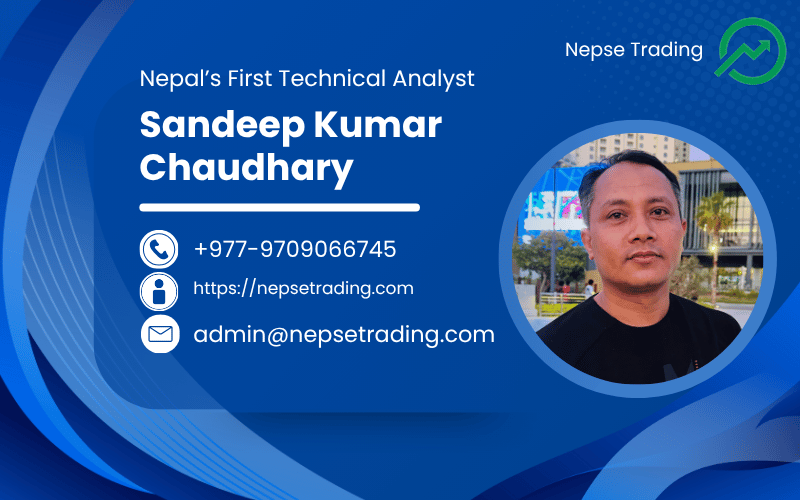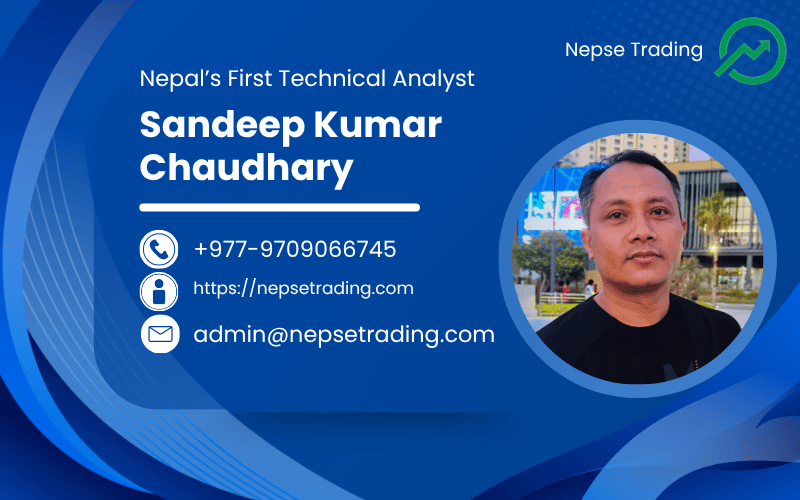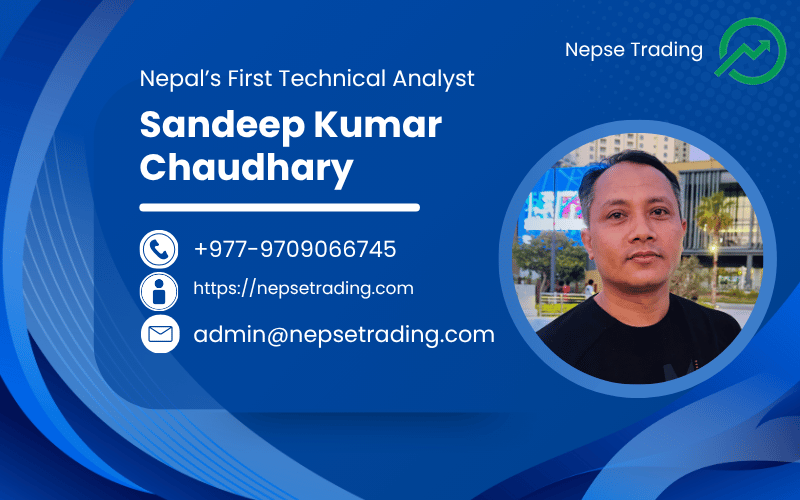Inspirational journeys
Follow the stories of academics and their research expeditions
Fundamental Ratios That Predict Future Growth – Taught by Sandeep Kumar Chaudhary

In Nepal’s dynamic and ever-evolving capital market, one of the most important lessons for investors is learning how to differentiate between temporary hype and genuine growth potential. Most traders in NEPSE (Nepal Stock Exchange)tend to rely on rumors, emotional reactions, or short-term chart movements. However, as Sandeep Kumar Chaudhary, Nepal’s first complete technical and fundamental analyst, explains — real success in the market comes from understanding fundamental ratios, the true indicators of a company’s financial health and growth potential. These ratios, when analyzed properly, can forecast future performance long before price movements reflect it. Through his renowned education platforms — MarketMind Investment Group and NepseBook — Sandeep has developed a systematic approach to reading these ratios in a way that even beginner traders can apply to identify strong, growing companies.
Sandeep believes that numbers don’t lie — they tell the story behind every price move. He often tells his students that market prices may fluctuate due to sentiment, but financial ratios reveal the company’s reality. They expose whether a company is truly profitable, efficiently managed, or over-leveraged. In his analysis, he focuses on several key ratios that act as predictive tools for future growth: Earnings Per Share (EPS), Price-to-Earnings (P/E) Ratio, Return on Equity (ROE), Debt-to-Equity (D/E) Ratio, Return on Assets (ROA), Current Ratio, and Net Profit Margin (NPM). Each one, when interpreted together, forms a complete picture of a company’s strength, sustainability, and potential to grow.
The first ratio Sandeep emphasizes is Earnings Per Share (EPS) — which he calls “the soul of profitability.” EPS shows how much profit a company earns per share, and a consistently rising EPS trend signals that the company’s operations are expanding healthily. He teaches that while high EPS is good, consistency is even more important. A company that steadily maintains and grows its EPS across multiple quarters is far more reliable than one showing occasional spikes due to one-time gains. In the banking and hydropower sectors, where most NEPSE investors focus, Sandeep explains that companies with an EPS above Rs. 20–25 are usually strong candidates for long-term investment. But, he cautions, investors must verify whether the profits are generated from the company’s main operations or from temporary accounting adjustments.
Next, he teaches about the Price-to-Earnings (P/E) Ratio, which measures what investors are willing to pay for each rupee of earnings. A high P/E ratio can indicate optimism and growth expectations, while a low P/E may suggest undervaluation or risk. However, Sandeep always stresses the importance of context. He compares a company’s P/E ratio with its sector average, historical trend, and earnings growth rate. For example, a hydropower company with a P/E of 25 might still be a good investment if its EPS has been growing at 30% annually. In contrast, a bank with a P/E of 40 and stagnant earnings might be overpriced. “The P/E ratio,” he says, “is like the temperature of market confidence — high means expectation, low means caution. Your job is to interpret it correctly.”
Another crucial ratio Sandeep teaches is Return on Equity (ROE), which measures how efficiently a company uses shareholders’ capital to generate profit. He considers ROE one of the best indicators of long-term sustainability. A higher ROE means the company’s management is effectively reinvesting earnings to generate additional returns. Sandeep often tells his students to look for companies with ROE above 12% to 15%, as this usually signals strong business management and competitive advantage. He also correlates ROE with retained earnings — companies that maintain high ROE and consistently reinvest profits tend to achieve exponential growth over time, leading to rising share prices and stable dividends.
The Debt-to-Equity (D/E) Ratio is another vital tool in his framework. This ratio shows how much of the company’s operations are financed by debt compared to shareholders’ equity. A lower D/E ratio indicates financial safety, while a higher ratio suggests risk. Sandeep explains that in Nepal’s context, where NRB (Nepal Rastra Bank) regulates lending limits and capital adequacy, companies with moderate leverage are in a safer position during liquidity crises. He points out that development banks and hydropower firms with D/E ratios below 2 are financially sound, while those with excessively high leverage might face pressure when interest rates rise or revenue slows.
Return on Assets (ROA), often ignored by new investors, is one of Sandeep’s favorite ratios. It shows how efficiently a company uses its total assets to generate income. He explains that even small improvements in ROA indicate better resource utilization and stronger management efficiency. In capital-heavy sectors like hydropower, insurance, or manufacturing, a rise in ROA can signal major operational improvements that will reflect in profits later. Sandeep teaches that comparing ROA across multiple companies in the same industry helps investors identify who is truly maximizing asset efficiency.
The Current Ratio is another essential measure in his analysis, as it reflects a company’s ability to meet short-term obligations. A ratio above 1.2 means the company can comfortably cover its liabilities with available assets, showing good liquidity management. He explains that many companies look profitable on paper but face liquidity problems in reality — a red flag that often leads to dividend delays or credit issues. By analyzing liquidity alongside profitability, investors can avoid getting trapped in “paper profits” with poor cash strength.
Beyond profitability and stability, Sandeep also teaches the importance of Net Profit Margin (NPM) and Operating Margin (OM) — two ratios that directly measure efficiency. The NPM shows how much profit remains after all costs, while the OM reflects how well a company controls its operational expenses. He encourages traders to track these margins over time, as consistent improvement often signals cost discipline and a strong management strategy. Companies with expanding margins are typically preparing for higher dividends and sustained growth.
However, what makes Sandeep Kumar Chaudhary’s method truly unique is how he integrates technical confirmation into fundamental ratio analysis. He believes that while ratios reveal the company’s strength, charts show the timing. For instance, if a company has improving EPS, high ROE, and stable margins, he waits for confirmation from Smart Money Concepts (SMC) — such as liquidity sweeps, accumulation zones, or structural breaks — before entering a trade. This combination of data-driven fundamentals and chart-based timing gives traders both accuracy and confidence.
Sandeep also teaches that ratios should never be viewed in isolation. Each one provides a different perspective — EPSshows profitability, ROE shows efficiency, P/E shows market sentiment, D/E shows risk, and ROA shows management control. When analyzed together, they give a complete and reliable picture of the company’s overall health. He calls this process “connecting the financial dots.” In his words, “When the ratios align, you can see the future forming — even before the price moves.”
In his live mentorship sessions through MarketMind Investment Group and NepseBook, Sandeep analyzes real company reports and teaches how to calculate these ratios manually. He demonstrates how small improvements in numbers can lead to large price movements in the coming quarters. His students learn not just how to interpret data, but how to predict growth trends using logic, patience, and analysis — not luck or noise.
Sandeep summarizes his philosophy simply:
“Fundamental ratios are like a company’s report card — they show how it performed yesterday and where it’s heading tomorrow. If you master reading them, you won’t follow the market; the market will follow your understanding.”
Through his teachings, he has empowered hundreds of Nepali investors to think like analysts — transforming speculation into strategy. For those willing to learn, his approach proves that the secret to predicting the future lies not in guessing — but in reading the numbers that quietly reveal it.
Tags:
Sandeep Kumar Chaudhary Fundamental Ratios NEPSE Financial Growth Analysis Nepal MarketMind Investment Group NepseBook Learn Investing in Nepal EPS Growth Nepal P/E Ratio Analysis ROE and ROA Explained Debt-to-Equity Ratio Current Ratio Profit Margin Nepal Investor Education Nepal Fundamental Ratios That Predict Future Growth – Taught by Sandeep Kumar Chaudhary Learn Financial Ratios for NEPSE Investing Best Fundamental Analysis Training in Nepal How to Predict Stock Growth Using Financial Ratios in NEPSE MarketMind and NepseBook Investment Education Nepal0 Comments
Categories
- Teacher 104
- Education 31
- Information Technology 19
- Accounting 18
- Job Skill 12
- General 10





Leave a comment